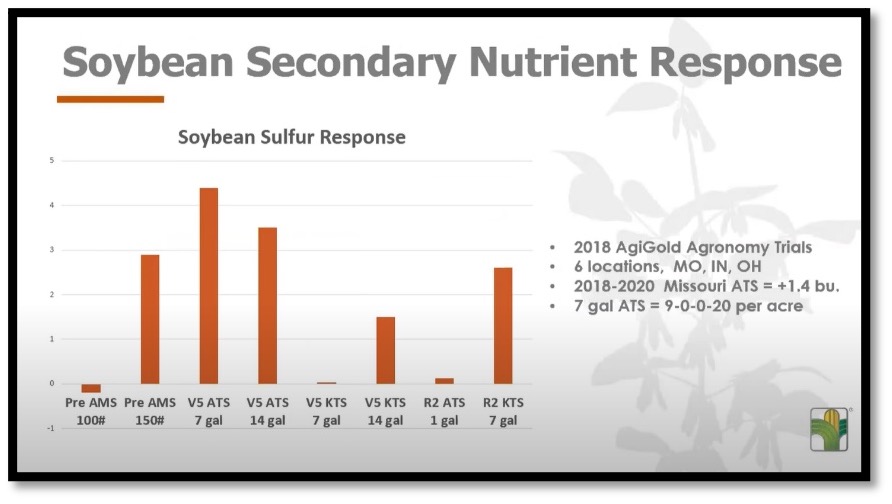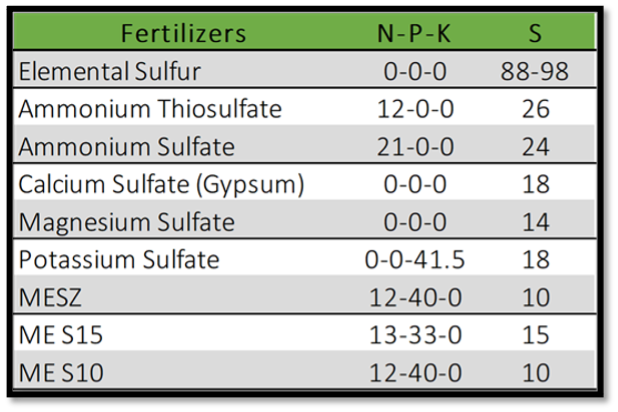In the past five years, it seems like conversations regarding sulfur have increased. And as a result, many farmers are starting to incorporate a sulfur application into their corn fertility program with strong results. Since then, the conversation has moved from corn to soybeans. Do soybeans need sulfur? Simply put, yes. Sulfur is an essential nutrient that is required by all plants – including soybeans. The question is whether or not sulfur is a limiting nutrient for your high yield journey. Since sulfur is immobile in the plant, deficiency will show up in the upper canopy and typically have a yellow or greenish tint. The 2021 crop is a great opportunity to establish on-farm research trials too.
Importance:
- Associated with amino acids/proteins
- Physiological growth
- Reduces environmental and other stresses
- Yield & profitability!
Cautions:
- Low organic soil: lower supply
- Heavy leaching soils: removed from root zone
- Variable soils may have variable supply
- Low microbial active soils: slow/low volume of release
- Cool wet soils/early planting
ILSoyAdvisor recently hosted a webinar featuring Dustin Bowling, AgriGold Western Agronomy Manager. He presented great ideas on how to think about managing a soybean crop and how we can better influence decisions for higher yields. One of the trials Bowling highlighted was sulfur on soybeans, looking at application of AMS, ATS and KTS at different timings. It's always good to try new concepts on a small scale to validate the proof of concept, then evaluate proper rates that will provide a consistent ROI.

Considerations:
- Elemental sulfur takes longer to be plant available; it may be a good, cheap source in the spring but will provide little to no value for the current crop.
- Sulfate-sulfur is already in a form that is available to the plant.
- Some dry fertilizer products have sulfur preblended into them. It's important to understand what percentage of the total sulfur is in the sulfate form.
- Organic matter will release sulfur for a plant to utilize, however timing and supply could vary from year to year or even in different locations in a field. Be cautious when relying on the soil to provide this essential nutrient.
- Many high-yield growers are evaluating applications of sulfur to both their corn and soybean crops.
- Use a tissue sampling protocol to validate sulfur response from applications and to track the season-long availability in the plant.



 and then
and then